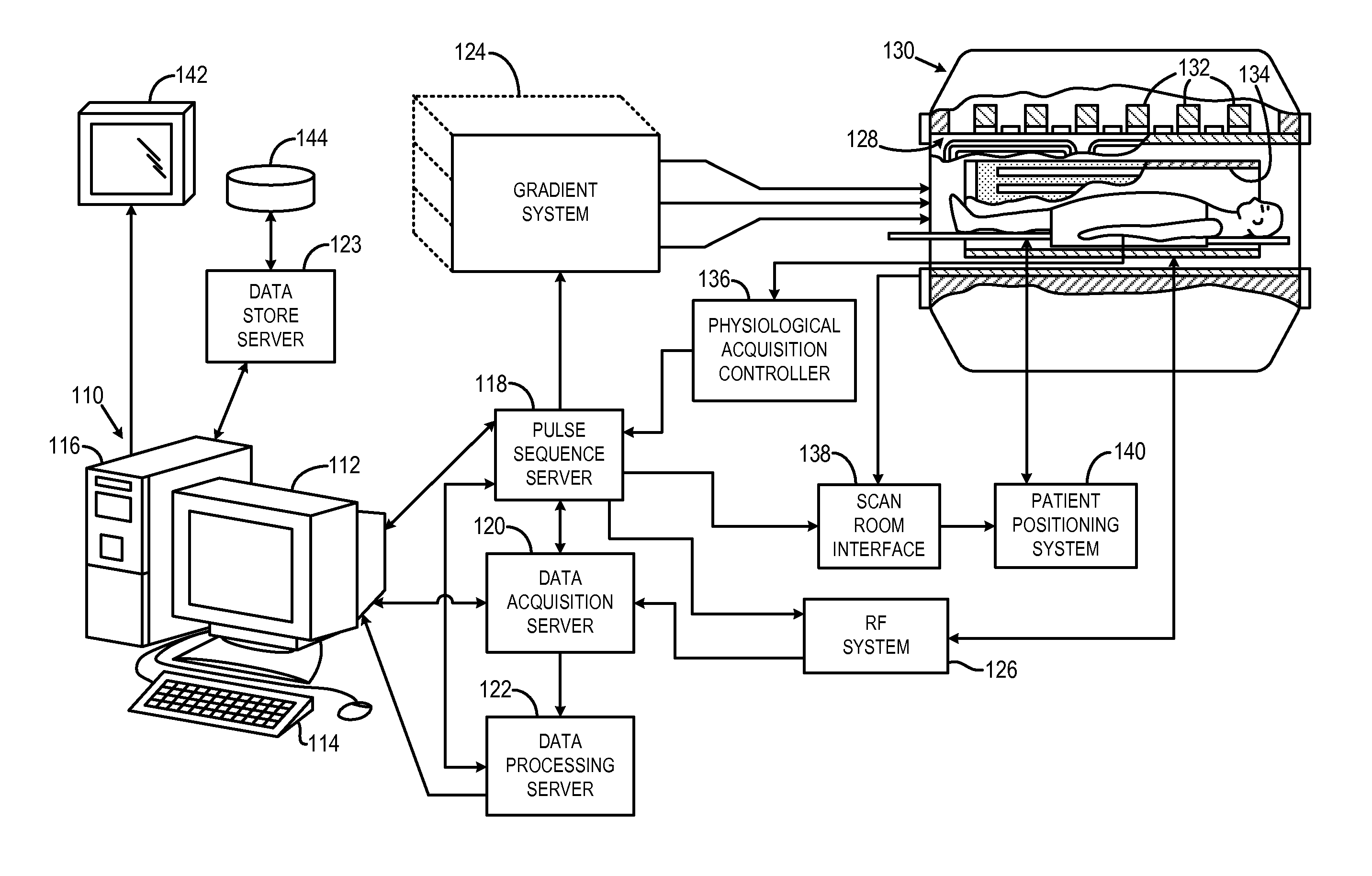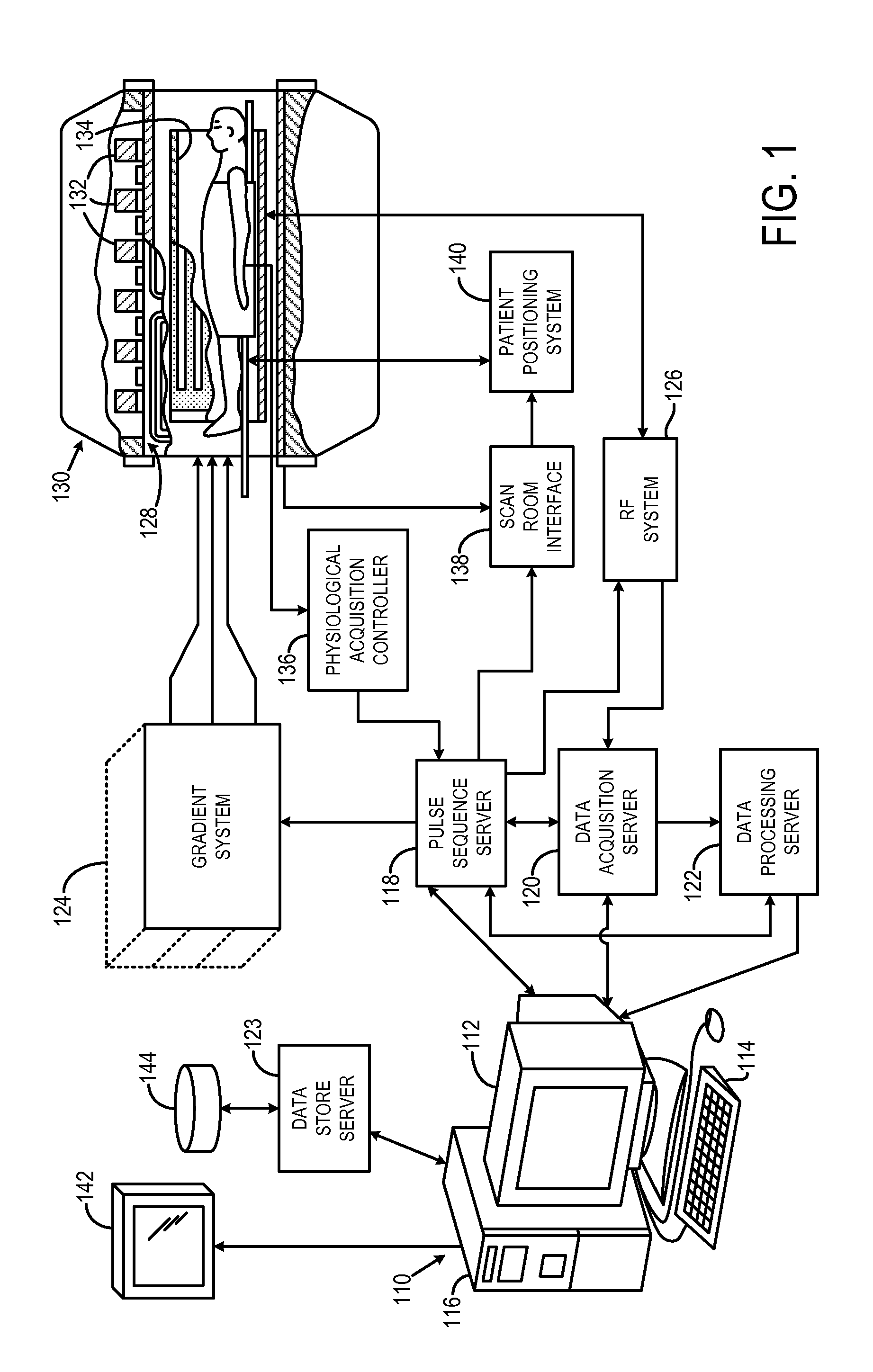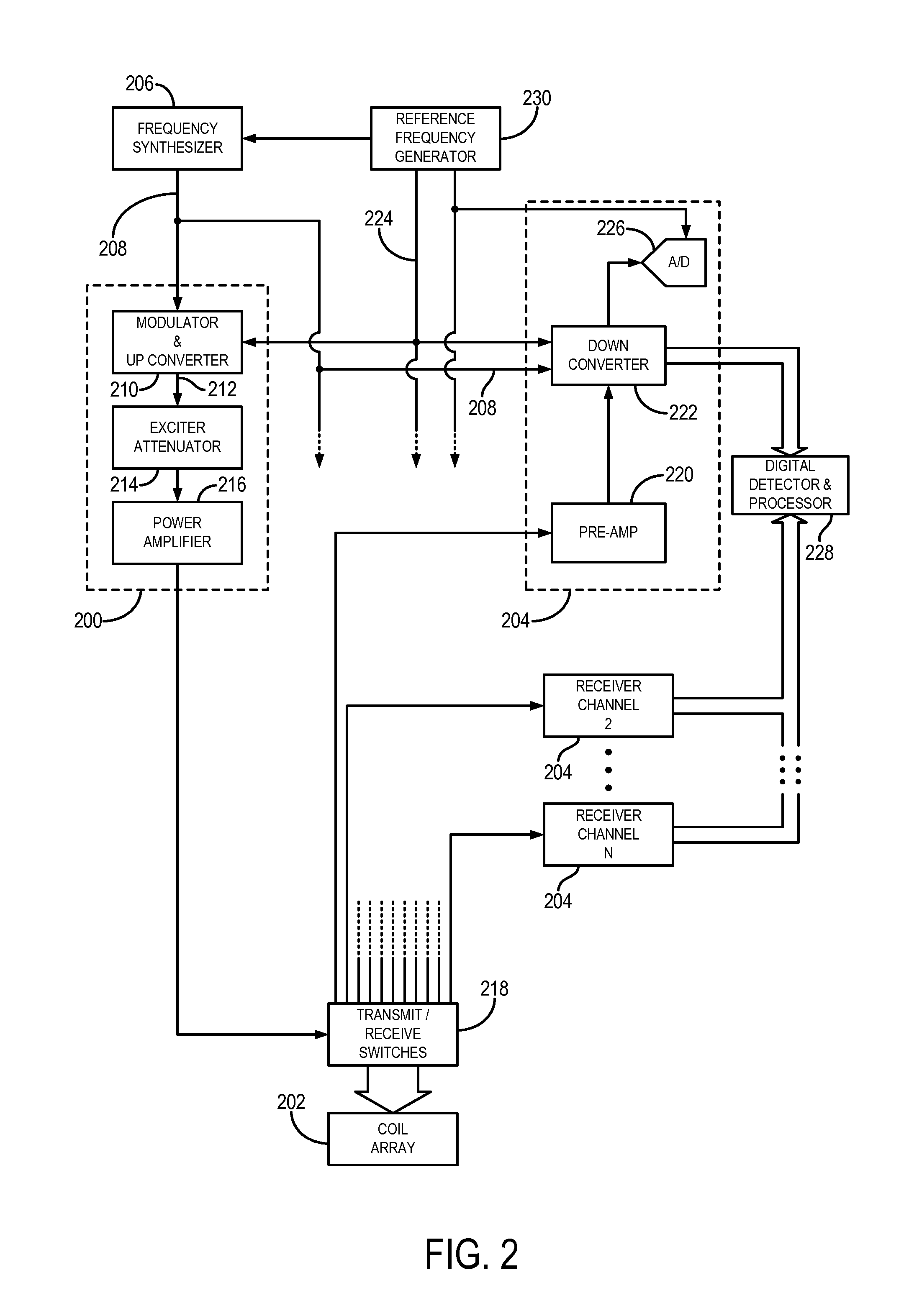Method for simultaneous multi-slice magnetic resonance imaging
a magnetic resonance imaging and simultaneous technology, applied in the field of parallel magnetic resonance imaging, can solve the problems of insufficient speed and efficiency for more advanced imaging applications, reducing the efficiency of conventional epi methods, and inefficient diffusion weighted imaging techniques, etc., to achieve the largest possible separation, reduce the tilt and blurring of pixels, and reduce the effect of aliasing pixels
- Summary
- Abstract
- Description
- Claims
- Application Information
AI Technical Summary
Benefits of technology
Problems solved by technology
Method used
Image
Examples
Embodiment Construction
[0048]The succeeding description is provided with reference to the following orthogonal spatial encoding directions common to magnetic resonance imaging (“MRI”): a slice-encoding direction, a phase-encoding direction, and a frequency-encoding direction. By way of example, as referred to herein, the slice-encoding direction corresponds to the z-direction in the image domain, which is aligned along the longitudinal axis of the bore of an exemplary MRI system, and the kz-direction in k-space. In this manner, the obtained images are transverse, or axial, images lying in the x-y plane. Accordingly, as referred to herein, the phase-encoding direction corresponds to the y-direction in the image domain, and the ky -direction in k-space; and the frequency-encoding direction corresponds to the x-direction in the image domain, and the kx-direction in k-space. It will be appreciated by those skilled in the art that the choice of these directions is arbitrary and any suitable permutation of thes...
PUM
 Login to View More
Login to View More Abstract
Description
Claims
Application Information
 Login to View More
Login to View More - R&D
- Intellectual Property
- Life Sciences
- Materials
- Tech Scout
- Unparalleled Data Quality
- Higher Quality Content
- 60% Fewer Hallucinations
Browse by: Latest US Patents, China's latest patents, Technical Efficacy Thesaurus, Application Domain, Technology Topic, Popular Technical Reports.
© 2025 PatSnap. All rights reserved.Legal|Privacy policy|Modern Slavery Act Transparency Statement|Sitemap|About US| Contact US: help@patsnap.com



